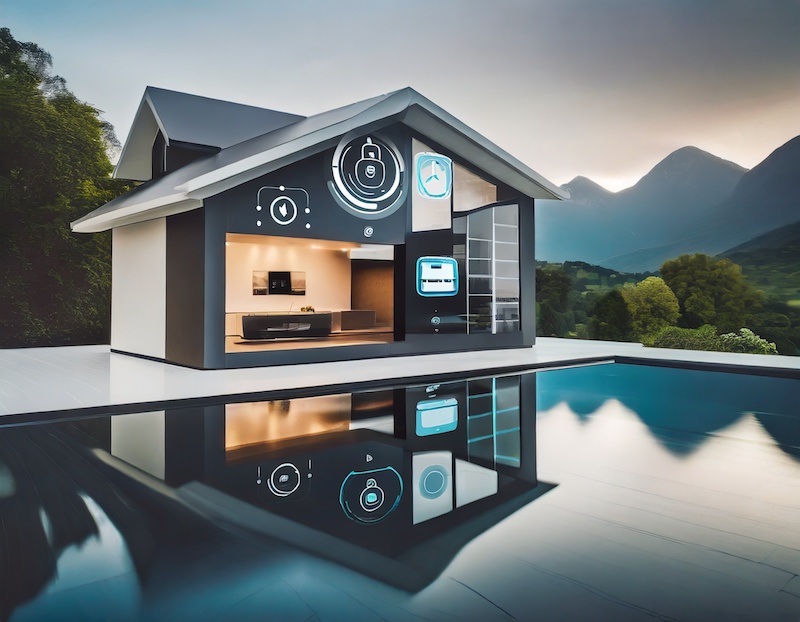We have an emotional attachment to our homes. This is the place where we want to feel safe and in control. Smart home automation can help enhance comfort, convenience, and accessibility. Understanding the user experience allows designers and developers to create products that truly cater to the evolving needs of customers.
Sometimes, however, there is a disconnect between what customers need and what developers offer. Creating a “walled garden” is the number one problem with smart home design, where the end-user is confined to certain parameters or devices in an ecosystem that one company controls. This approach can limit compatibility and data access, putting the company’s interests before a consumer’s needs.
The Customer Knows Best
It is important for smart home automation developers to empathize with users so they can anticipate how certain automation features might make homeowners feel. For example, automating lighting to create a cozy and relaxing atmosphere after a long day can evoke positive emotions and enhance the overall user experience.
Nothing can replace the feedback from customers who are using the products on a daily basis. Customers often find unique use cases that can lead to valuable product improvements. For example, one of the super users of my company’s products pointed out that customers were adding open-source firmware so they could utilize a messaging protocol to connect to Home Assistant and other systems. We decided to make this function part of our standard design because of input from customers.
If designers are not thinking about how a customer will use the product, then they are missing the point. There are a number of online community forums that provide an outlet for users to share ideas and new ways to set up home automation. Companies should be actively listening because customer feedback is a goldmine of insights for product development.
The Value of Customized Solutions
One size does not fit all, especially in home automation, and it is essential to understand that every household has different needs. Making specialized products that focus on specific use cases is more effective than trying to make one product do everything.
The first step in the design process is to select the scope of a product. For example, developers can focus on a component that is great at turning on lights or triggering electrical outlets. Another product can focus on dimming lights, providing a distinct and dedicated solution.
If developers try to make something that can do too many things, they risk creating an expensive and bulky product that may not pass certification. Tailoring products to address a specific need is more efficient.
Your Home Helper
Americans are continually finding ways to improve convenience and comfort through smart home automation. In fact, half of U.S. households have at least one smart home device.
Voice-activated smart assistants like Alexa or Google Assistant allow you to control various devices, such as door and window locks, thermostats, and entertainment systems. This hands-free capability can be particularly beneficial for people with limited mobility.
If you are hearing impaired, then home automation can be set up to flash to alert you when someone is ringing the doorbell. Smart plugs and outlets allow users to remotely control various appliances, such as coffee makers, fans, or heaters, making it easier to manage them.
Motorized curtains and blinds can be controlled with a smartphone or voice commands, enabling easy access to natural light and privacy control. Smart lighting systems allow users to control the brightness, color, and timing of lights through their smartphones or voice commands. If you tend to get up in the middle of the night, you can program your lights to turn on at 15% brightness to help prevent tripping and falling.
Best Practices for Smart Home Automation Design
The global market for smart homes is expected to reach a value of roughly $140 billion this year. By putting customer needs at the center of the design process, developers are in a better position to anticipate trends. Smart home automation makers should always be looking to improve and innovate.
Focusing on functionality and making a quality product should be a top priority. By understanding the pain points and requirements of users, manufacturers can create durable, high-quality products that withstand the test of time. Many users want products that are invisible and can be installed behind light switches and electrical outlets.
Proper certification and adherence to safety standards are crucial, and this level of installation might require the help of a professional. Even for the pros, clear instructions for the devices, which include diagrams, should be included.
Providing Frictionless Integration
At the end of the day, a smart home system should be simple to use and rock solid. Well-designed smart home automation creates products that work well together so you can customize, regardless of the brand. Interoperability and ease of use are crucial factors in creating a better user experience. It should not matter whether you have a Ring camera and smart bulbs running on Home Assistant because these devices all need to function together seamlessly.
Everyone has a unique take on their home and their needs. A customer may ask a question that sparks an idea for a new function. It is important to listen to user ideas and experiences.
When it comes to smart home automation, empathizing with customers is key. Putting the user at the center of design and development helps smart home automation become more than just a collection of gadgets. It can address pain points and enhance the emotional connection you have with your home.





![Hub 3_02 The SwitchBot Hub 3 provides a user-friendly solution to the growing complexity of modern smart homes. [Photo credit | SwitchBot]](https://restechtoday.com/wp-content/uploads/2025/06/Hub-3_02-scaled-e1750179791687.png)


